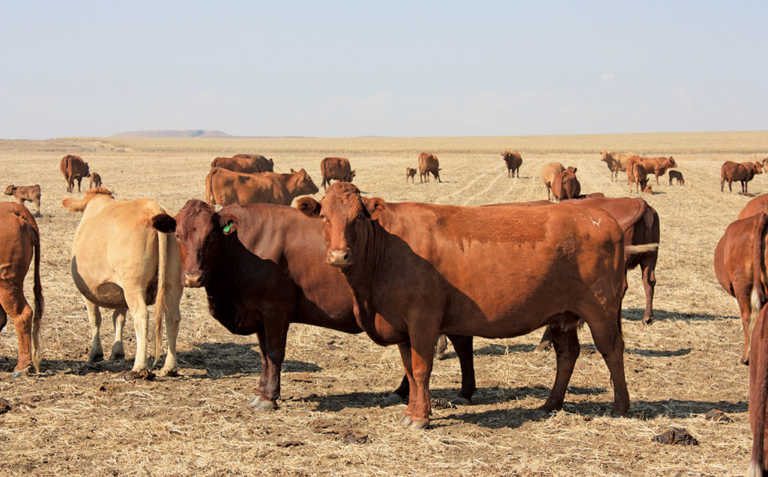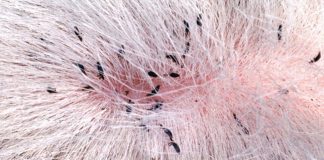
Photo: Lindi Botha
Bovine brucellosis, also known as contagious abortion, is reported across all nine provinces of South Africa, particularly in the central and Highveld regions.
The disease causes abortion in cattle, resulting in severe reproduction and production losses and drastically reducing financial turnover. It can infect most other mammals, including humans.
READ Controlling sexually transmitted diseases in cattle
Symptoms are often vague and may resemble other diseases. Frequent testing of the herd is imperative to ensure that an outbreak is detected as early as possible.
Dr Peter Oberem, CEO of Afrivet, says that because the state veterinary services’ rigorous tuberculosis and brucellosis control programmes were halted, the true extent of the disease is unknown.
“It can, however, be clearly stated that the situation is bad and a threat to food security, food safety and human health. Fortunately […], probably all the milk sold via the major dairies and chain stores is pasteurised and/or UHT, and hence safe for human consumption.”
Cause and spread
Bovine brucellosis is caused by the Brucella abortus bacterium, and is highly contagious. Cattle usually get the disease from contaminated feed or water, or after licking an infected afterbirth, calf or cow. Infected animals remain carriers of the disease for the rest of their lives.
Brucellosis is a state-controlled disease, and positive animals must be reported to the state vet immediately.
Dr Faffa Malan, manager of the Ruminant Veterinary Association of South Africa, stresses that a single infected animal can rapidly infect the rest of the herd if not identified and slaughtered before calving.
He warns that if an animal has recently been bought into the herd from an auction or another herd without the CA3 declaration as proof that the herd of origin was recently tested for bovine brucellosis, the animal could be positive or latently positive.
Identifying Brucellosis
Oberem says the first visible sign that a herd is infected with brucellosis will be the number of abortions.
“If these are not obvious, a lengthened intercalving period in any herd should raise concern that there’s brucellosis. Also, if the abortus is not seen, a retained placenta hanging from the vulva for more than 12 hours after the cow has calved may be an indicator of something wrong, possibly due to brucellosis. In chronic cases, hygromas [fluid-filled swellings] occur mainly on the carpal joints.”
He adds that it is not easy to detect early infection in a herd simply from clinical signs, and testing is therefore crucial.
“If abortions occur, many exposed cattle and humans will become infected, so it’s important to regularly test any herd of cattle, especially dairy cattle.
“If a stock owner suspects brucellosis in a herd, it’s critical that the attending veterinarian be consulted urgently. Because brucellosis is listed by the Animal Diseases Act of 1984 as a notifiable disease, the testing must be done under the instruction of the nearest state vet. Blood and/or milk samples will be sent to Onderstepoort Veterinary Research for testing. Most other state laboratories don’t comply with SANAS [accreditaton] standards.”
Oberem says that if a herd tests positive for brucellosis, the state will assume full control and place it under quarantine.
“Positive animals are branded accordingly. This means that no animal, whether it’s positive or untested, may leave the property unless it’s in a sealed truck to an approved abattoir under a Red Cross permit issued by the state vet.”
He adds that removing brucellosis-negative cattle from an infected herd is highly risky, even under optimal conditions.
“The incubation period of brucellosis can vary from two weeks to a year or even longer, so a brucellosis-negative animal could become positive much later. If brucellosis-negative animals from a brucellosis-positive herd need to be transported, the group must be isolated from the herd and have two negative test results before relocation.
“Branded brucellosis-positive cattle may only leave the farm to be transported to the abattoir for slaughter. It’s wise to check whether or not the abattoir will accept brucellosis-positive animals for slaughter.”
Testing positive
A herd is diagnosed positive if Brucella organisms have been isolated in birth canal tissue, placenta and lymph glands. Once brucellosis has been diagnosed, all the animals in the herd must be quarantined and placed under official oversight.
According to Malan, the first step is to cull infected, positive animals.
“There’s no silver bullet solution for brucellosis eradication. Getting back to brucellosis-free status involves repeat testing, culling and isolation.”
The following steps should be taken if your herd tests positive for brucellosis:
- Inform the local state vet.
- Once the results are attained, brand all the cows that reacted positively with a ‘C’ on the right side of the neck.
- Quarantine the herd.
- Inform neighbouring farmers so they can start testing immediately.












